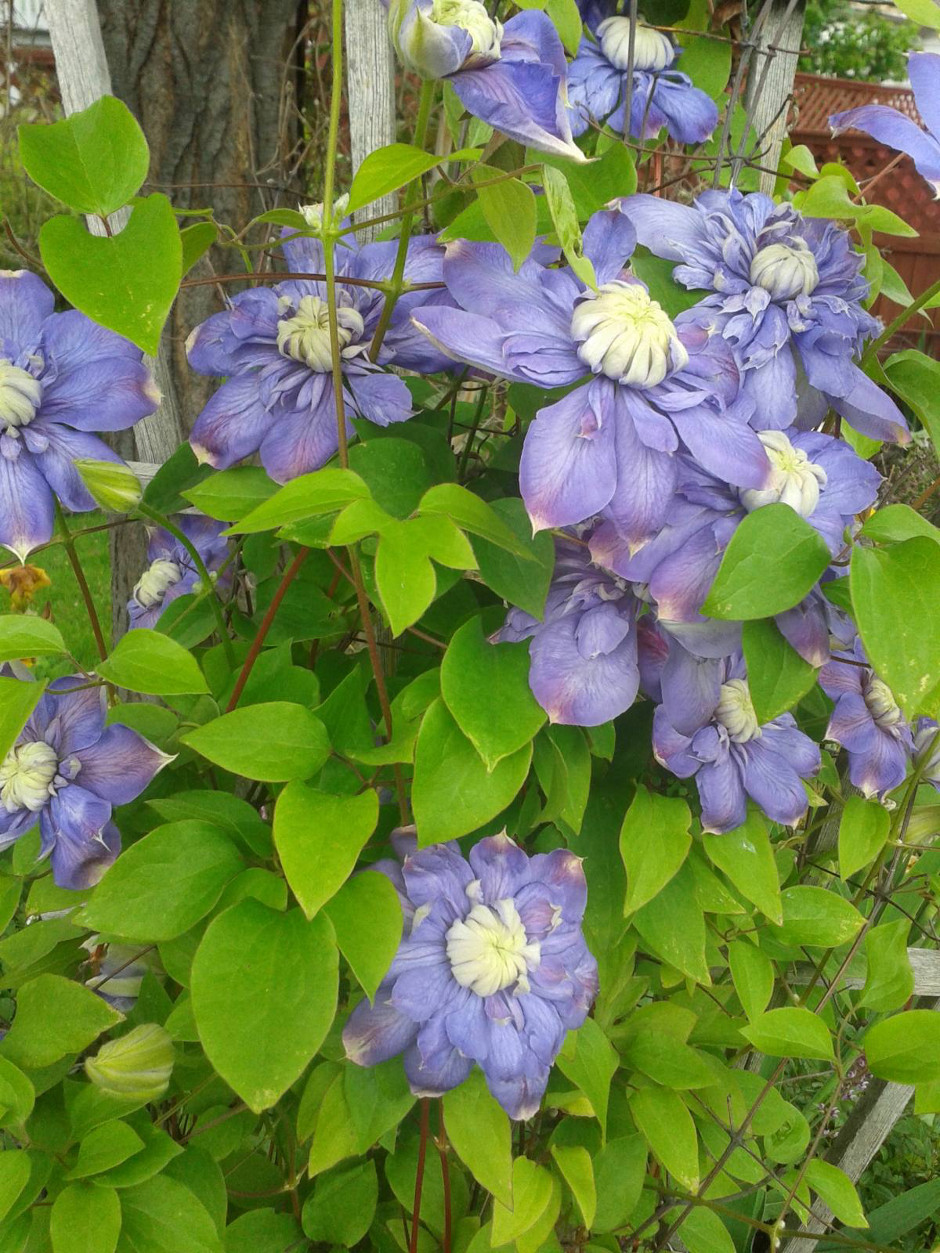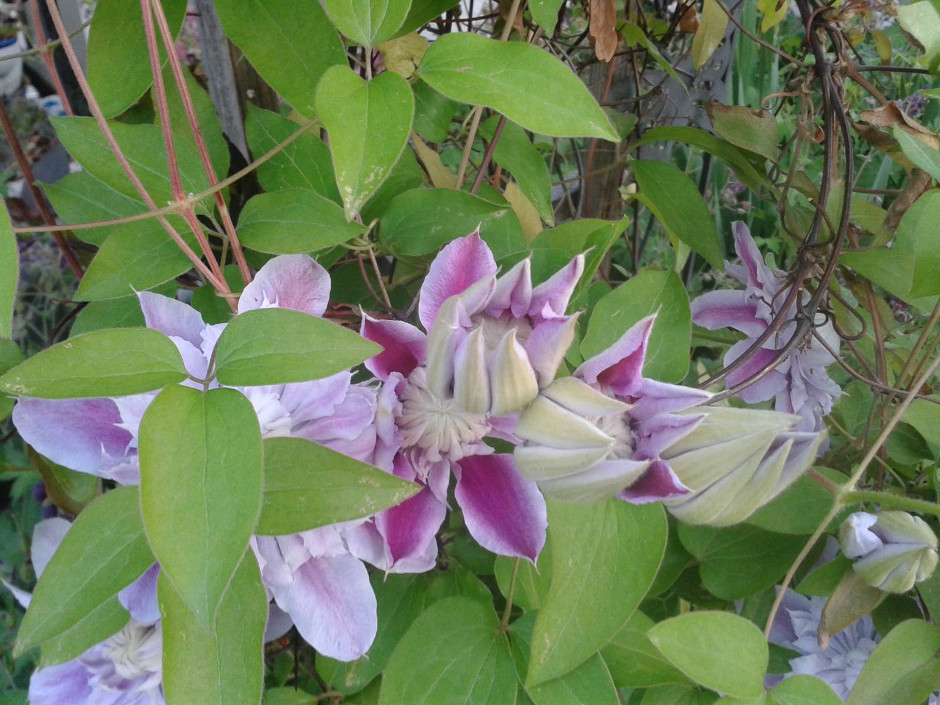Clematis plants are very floriferous, come in a wide variety of colours and love our climate. Clematis make a beautiful display whether they sprawl along the ground, are planted against frames, grow up into trees, climb over archways, pergolas, or fences, while smaller varieties do well in containers.
Depending on the variety, there is bloom from spring through to fall. There are numerous varieties and types available in the big box stores and in the nurseries and at prices to suit any budget. The mantra for placing clematis is that they should be planted with their heads in the sun and feet in the shade. Choose a sunny location but one where you can plant lower growing plants at the base of the clematis which will help to keep their roots cool.
Clematis’ are usually sold in containers but you may find young plants in two inch plastic pots. If you are preparing to plant a container grown plant, dig a hole 45 cm square and deep. Loosen the soil at both the bottom and the sides of the hole. Place two or three handfuls of bone meal in the bottom of the hole and then add well-rotted manure and organic matter. Put the plant in the hole so that the soil level in the container is below the level of your hole. Back fill the hole with soil and water well.
On clematis tags one often sees the words “Group A, Group B or Group C3 and in books often type 1, 2, or 3 which may seem puzzling at first glance. Those groups A’s or type 1 bloom early in the spring and are delightful as they cheer us with their colours. Many of the blooms in this group are relatively small. After they have finished blooming, they leave wonderful seeds heads for us to enjoy through the year. If you need to prune this group, do so after they have bloomed and only enough to confine them to the space you want them in. Examples of type A’s include: Markham’s Pink, Bluebird, Pamela Jackman.
Group B’s or type 2 bloom a little later and tend to have larger flowers. Again, they should just be pruned to fit the space you have. Examples of Type 2’s are Henryi, Dr. Ruppel, Nellie Moser, Gillian Blades and Barbara Jackman.
Group C’s or type 3 bloom June through September and flowers tend to be larger. These clematis should be pruned early in the spring as soon as you see green growth on about the first six inches. Cut them down to this level. Examples include: Duchess of Albany (small flowers), Jackmanii, Viticella, Ernest Markham and many others.
Clematis grow in the wild in our area: take a walk in the woods and you will often see plants like the one in the picture to the right. Native clematis need the alkaline soil that our area provides.
Growing Clematis for Beginners - text and photos by Barbara Bowmar, Okanagan Master Gardener
Resources:
Evison, Raymond J. 2007. Clematis For Small Places: 150 High Performance Plants for Decks, Patios, Balconies and Boarders. Timber Press. Portland.
Fair, Keith and Carol. 1997 Clematis for Colour and Versatility. The Crowwood Press Ltd. Wiltshire.
Gardener, David. 2007. Clematis and Climbers. D.K. Publishing. New York.
Plant Sources:
You will find a good selection of clematis at any of the local nurseries. Bylands has had a few of the Raymond Evison hybrids. Clearview Horticultural Products: The Home of Clematis, Langley, BC is worth a visit.
See photos below.






